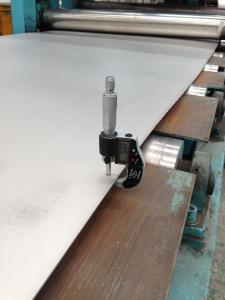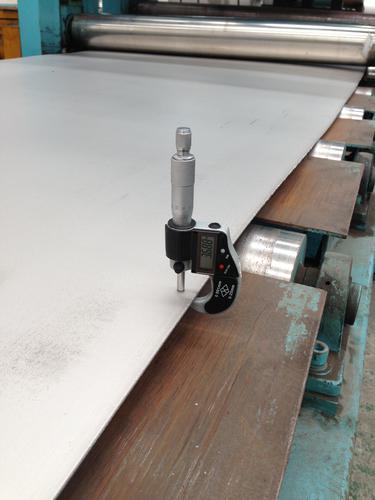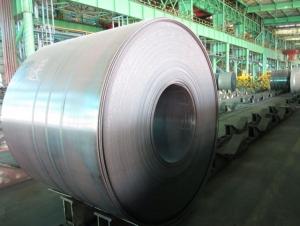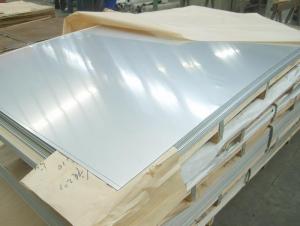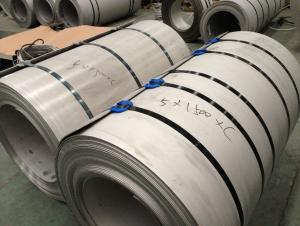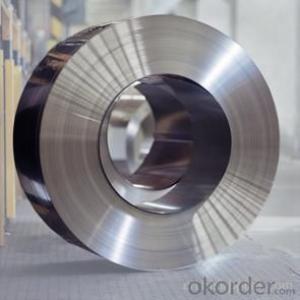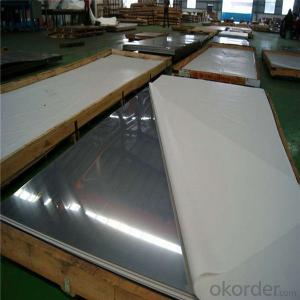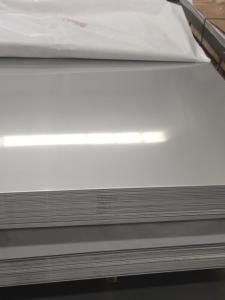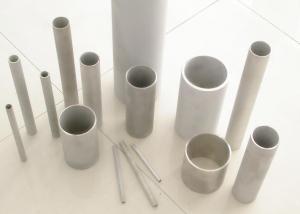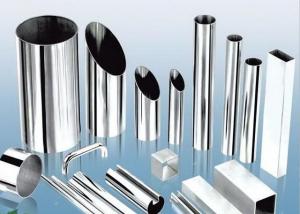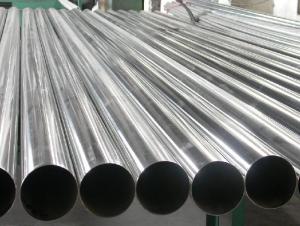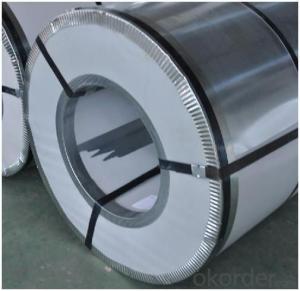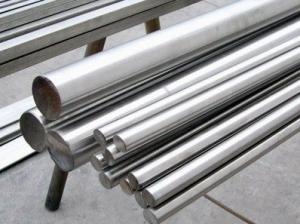Cold Rolled Stainless Steel Plate In Stocks With Price
- Loading Port:
- Shanghai
- Payment Terms:
- TT or LC
- Min Order Qty:
- 4 m.t.
- Supply Capability:
- 4000 m.t./month
OKorder Service Pledge
OKorder Financial Service
You Might Also Like
1.Structure of Product Description
Cold rolled Stainless steel sheet is widely used in the field of construction field and decoration field, etc.the detailed grade are as follows: 201, 202, 301, 304, 316, 410, 420, 430, etc. The surface is including 2B, BA, Mirror Finish, Checkered, etc.
2. Main features of the product
a. Competitive price
b. Frist-Class Service.
c. Shortest service.
3. Image.
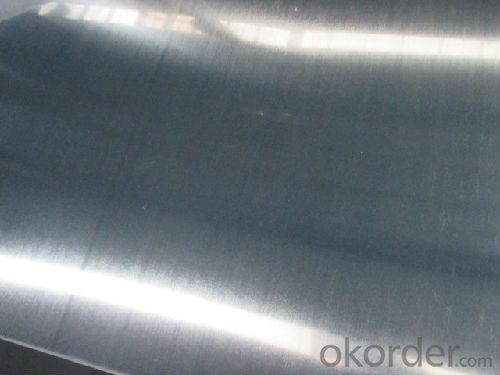
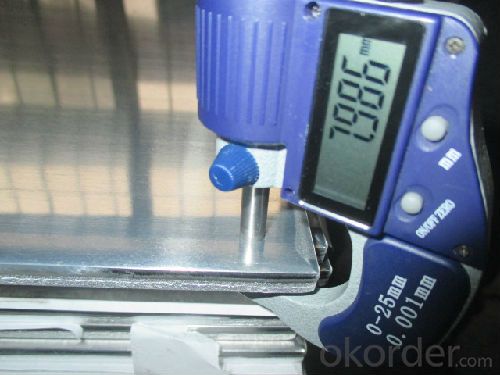
4. Product detailed sizes:
1000mm*2000mm, 1219mm*2438mm,1220mm*2440mm, 1250mm*2500mm,1500mm*3000mm, etc.
5. FAQ:
What is the quality standard?
---Usually our standard is GB3880-2006 or else.
What is the width range?
---It is from 1000mm to 2500mm, etc.
What is the length range?
---It is from 2000mm to 6000mm, etc.
What is the MOQ for your products yet?
---Normally it is around 3 tons/each size.
How many tons did you export in one year?
---Normally it is around 9000 tons totally.
Where is your client from?
---Normally it is from saudi arabia, uae, etc.
---Normally they are stainless steel sheet, stainless steel coil, stainless steel checkered sheet, stainless steel mirror finished sheet, color coated stainless steel sheet, etc.
- Q: Can stainless steel sheets be used for fermentation tanks?
- Yes, stainless steel sheets can be used for fermentation tanks. Stainless steel is a popular choice for fermentation tanks due to its resistance to corrosion, durability, and ease of cleaning. It provides a hygienic environment for fermentation processes and helps maintain the desired temperature and conditions for fermentation.
- Q: Can stainless steel sheets be used for food processing or medical applications?
- Yes, stainless steel sheets can be used for food processing or medical applications. Stainless steel is a highly durable and corrosion-resistant material, making it an ideal choice for these industries where hygiene and cleanliness are of utmost importance. In food processing, stainless steel sheets are commonly used for various applications such as countertops, work surfaces, sinks, storage containers, and equipment. Its non-porous surface prevents the growth of bacteria and makes it easy to clean and sanitize. Similarly, in medical applications, stainless steel sheets are widely used due to their excellent resistance to corrosion, heat, and chemicals. They are used for medical instruments, surgical equipment, implants, and other medical devices that require high levels of cleanliness and sterilization. Stainless steel's biocompatibility and resistance to body fluids make it suitable for implantable devices like pacemakers, joint replacements, and dental implants. Overall, stainless steel sheets are a preferred choice for food processing and medical applications due to their hygienic properties, durability, and resistance to corrosion.
- Q: Are stainless steel sheets resistant to abrasion?
- Yes, stainless steel sheets are highly resistant to abrasion.
- Q: Are stainless steel sheets resistant to stress corrosion cracking?
- Yes, stainless steel sheets are generally resistant to stress corrosion cracking due to their high levels of chromium and nickel, which create a protective oxide layer on the surface. This layer prevents the initiation and propagation of corrosion cracks under tensile stress.
- Q: Can stainless steel sheets be cut to size?
- Yes, stainless steel sheets can be cut to size using various cutting methods such as shearing, laser cutting, or waterjet cutting.
- Q: What's the difference between stainless steel 302 and 304?
- 302 stainless steel and 304 stainless steel are suitable for food processing, storage and transportation. It has good processability and weldability.
- Q: How do you remove heat discoloration from stainless steel sheets?
- To remove heat discoloration from stainless steel sheets, you can try using a stainless steel cleaner or polish specifically designed for removing heat stains. Apply the cleaner to the affected area and gently rub it in using a soft cloth or sponge, following the grain of the stainless steel. Rinse with water and dry thoroughly. However, if the discoloration persists, it is recommended to consult a professional for further assistance.
- Q: Do stainless steel sheets require any special handling during installation?
- Yes, stainless steel sheets do require special handling during installation. Here are a few important considerations: 1. Avoid Contamination: Stainless steel is prone to contamination from various sources, such as carbon steel, dirt, or grease. It is crucial to ensure that the installation area is clean and free from any potential contaminants. Tools used during installation should also be clean and free from other metals. 2. Protection from Scratches: Stainless steel sheets are susceptible to scratching during installation. It is important to handle them with care and use protective coverings or wraps to prevent any scratches or damage. Additionally, using non-abrasive tools and avoiding dragging or sliding the sheets across surfaces can help maintain their integrity. 3. Proper Fixing Techniques: Stainless steel sheets are typically secured using mechanical fasteners or adhesives. It is essential to follow the manufacturer's recommendations or industry best practices for the specific installation method. This includes using the correct type and size of fasteners and ensuring they are properly tightened without over-torquing, which can cause damage. 4. Expansion and Contraction: Stainless steel sheets can expand or contract with changes in temperature. During installation, it is necessary to allow for this movement by providing adequate clearance or using expansion joints where required. Failing to account for thermal expansion can lead to buckling, warping, or stress on the sheets. 5. Avoiding Galvanic Corrosion: Stainless steel sheets should not come into direct contact with dissimilar metals, especially those with higher galvanic potential, as it can cause galvanic corrosion. Using compatible materials and insulating stainless steel sheets from direct contact with other metals can help prevent this type of corrosion. By following these special handling guidelines, stainless steel sheets can be installed correctly, maintaining their aesthetic appeal and durability over time.
- Q: Are stainless steel sheets resistant to chemicals?
- Generally, chemicals do not pose a problem for stainless steel sheets. Stainless steel is famous for its ability to resist corrosion, which is why it is widely used in industries like chemical processing, pharmaceuticals, and food processing. The presence of elements like chromium and nickel in stainless steel forms a protective layer on its surface, preventing most chemicals from penetrating. However, it's important to note that the resistance to chemicals may vary depending on the grade and composition of the stainless steel used. In highly aggressive environments or when dealing with specific chemicals, it's advisable to consult a materials engineer or refer to compatibility charts to ensure the best stainless steel grade is chosen.
- Q: What are the different types of textured finishes available for stainless steel sheets?
- There are several types of textured finishes available for stainless steel sheets, including brushed, embossed, hammered, linen, and mirror finishes.
Send your message to us
Cold Rolled Stainless Steel Plate In Stocks With Price
- Loading Port:
- Shanghai
- Payment Terms:
- TT or LC
- Min Order Qty:
- 4 m.t.
- Supply Capability:
- 4000 m.t./month
OKorder Service Pledge
OKorder Financial Service
Similar products
Hot products
Hot Searches
Related keywords
